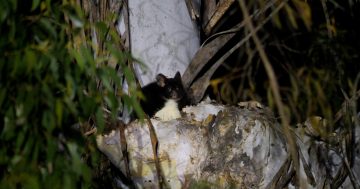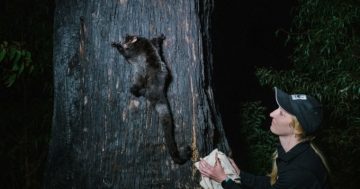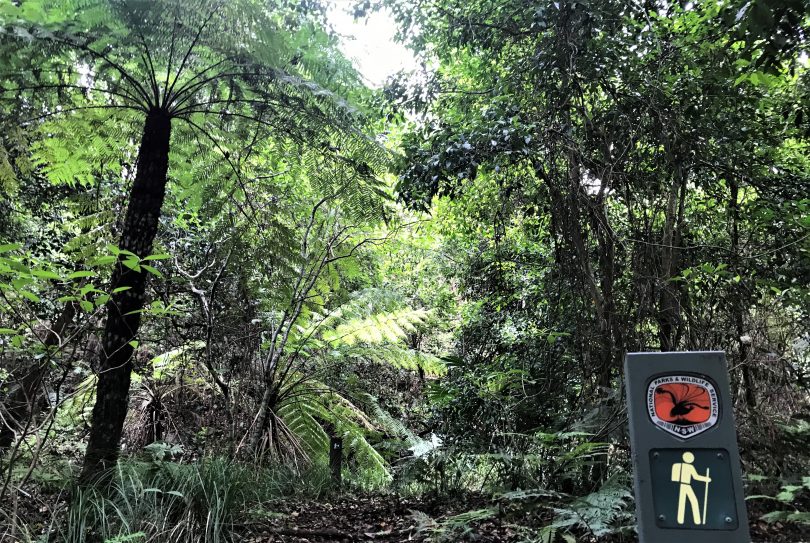
The start of the Corn Trail in the Buckenbowra Valley. Photos: Alex Rea.
Local residents and environmental groups have called for a suspension of logging in an area abutting the Monga National Park, adjacent to the historic Corn Trail in the Buckenbowra Valley.
The 12.5km Corn Trail winds from the top of the Clyde Mountain down to the head of the Bolero Valley. Popular with bushwalkers and horse-riders, the walking track was originally used by Aboriginal and early European settlers, whose corn was transported by pack-horse up to Araluen and Braidwood.
The ‘Forest Embassy’ group is running a Don’t Log the Corn Trail campaign, calling for two logging compartments to be added to the National Park as part of a 12-hectare exclusion zone. Much of the work in the south-east is only visible from the air.
Friends of the Mongarlowe River (FMR), a group initiated by Judith Wright that fought successfully to create Monga National Park, argue that the economics of logging steep hillsides in a forestry compartment surrounded by Declared Wilderness just don’t stack up with no discernible commercial benefits.
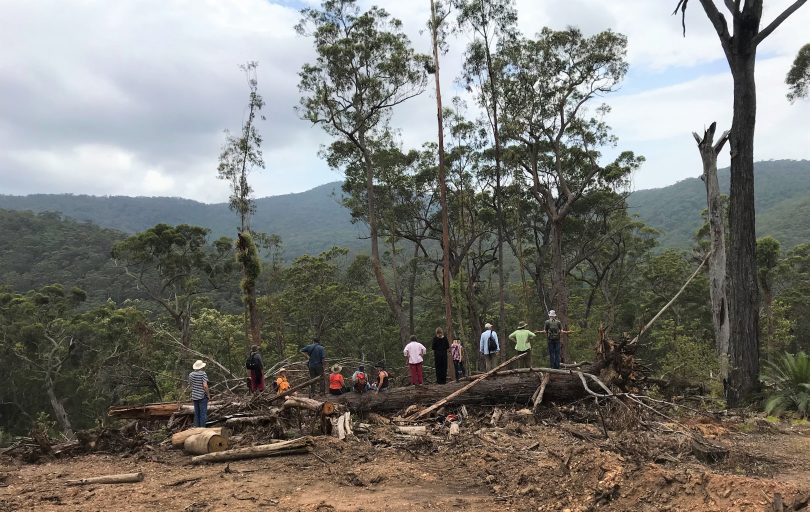
Walkers survey the logged forest next to the Corn Trail.
The Corn Trail is currently under consideration for inclusion on the State Heritage Register. Based on previous research in NSW forests, FMR says up to 200 vulnerable Greater Gliders are almost certain to die as a result of the logging, and the endangered rare Spotted Quoll, recently seen in the area, will also be put at risk. An Aboriginal scar tree has also been identified on the steep hillside up from the trail.
Further risks include run-off that could contaminate water quality in the Buckenbowra and Clyde Rivers, and post-logging burns adjacent to the surrounding ancient cool climate rain forest.
With Friends of the Forest and the Forest Embassy, FMR are calling for an immediate halt to logging operations, reclassification of compartment no. 517 – which has already sustained heavy losses – and the adjacent no. 516, as Preserved Forest Area; and a process to incorporate these forests into the bordering Buckenbowra Wilderness Area.
“Locals are hopping mad about the destruction of this precious State asset. The fact that native forest can be logged in this wilderness area is deplorable,” said a spokesperson for FMR.
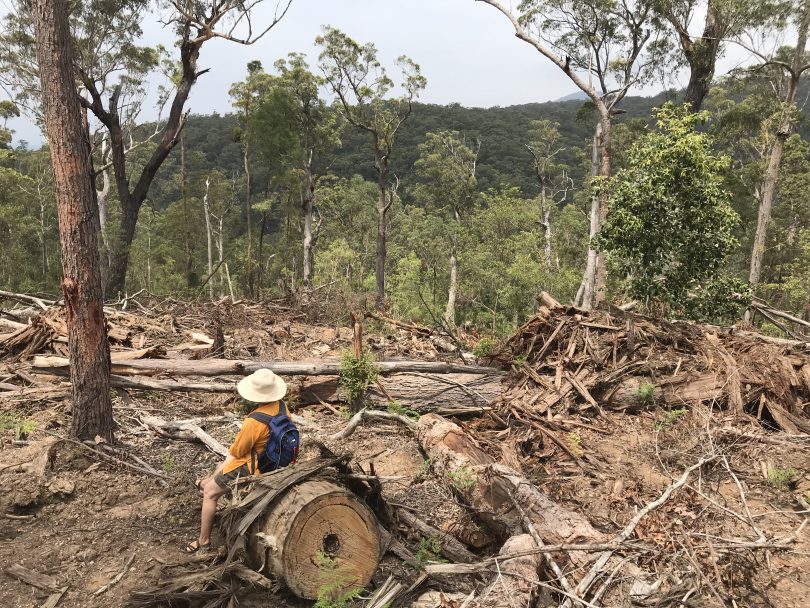
Most of the treetop will be left on the forest floor with the highest use of the cut tree being 34 per cent going to woodchips then 28 per cent for firewood and miscellaneous. Only 22 per cent is for sawlogs.
State Forests from Gippsland to the North East have seen logging commence with the 20-year renewal of the Regional Forest Agreements late last year.
At the time Minister for Agriculture David Littleproud, Assistant Minister Senator Richard Colbeck and NSW Minister for Lands and Forestry Paul Toole said “the improvements and 20-year extension to the RFAs provide long-term confidence and sustainability for the future of NSW’s $2.4 billion wood product manufacturing industry”, adding that the native forest timber industry operates with some of the highest levels of sustainability in the world.
However, the National Parks Association (NPA) says the Prime Minister and Premier have “doggedly ignored evidence and sentenced millions of forest animals to death.”
“The rushed decision to renew Regional Forest Agreements ignores huge volumes of evidence”, according to the National Parks Association of NSW. “RFAs essentially act as an exemption to the logging industry from federal environment law – meaning that even where federally-listed species occur, logging is given the green light.”
“Governments have decided to roll all RFAs over simultaneously for 20 years, deliberately locking them in before elections in NSW and federally. To say we’re disappointed is an understatement. We’re furious,” said Ms Alix Goodwin, NPA CEO.
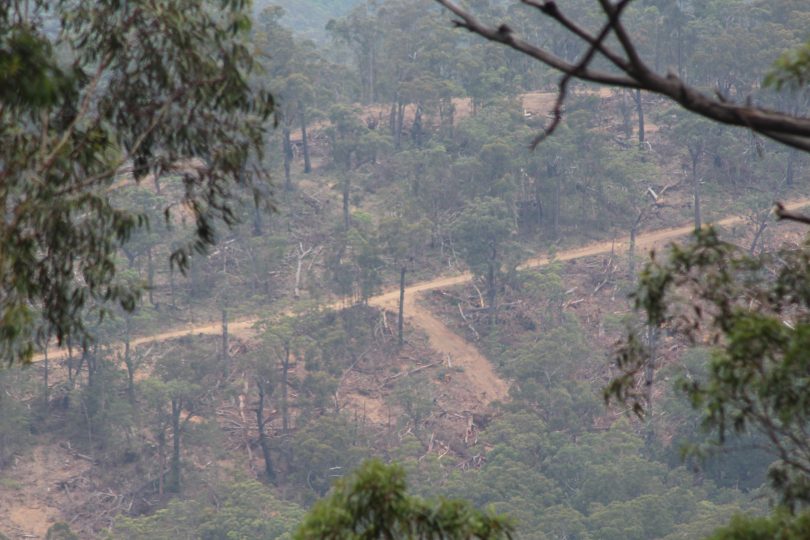
View of the logging from Misty Mountain Road.
Last week Premier Gladys Berejiklian announced a new national park in the Southern Highlands along with a major new package that will improve access to existing national parks.
Environment Minister Gabrielle Upton said the NSW Government’s $150 million investment includes upgraded walking tracks, better visitor infrastructure and facilities and new digital tools such as virtual tours and live-streaming cameras.
The Nature Conservation Council welcomed the announcement but said it “does not compensate for the Coalition’s terrible record on park creation and koala conservation.”
The bottom of the Corn Trail is in the Eurobodalla Shire, state seat of Bega and tight federal seat of Gilmore. The Forest Embassy group has been campaigning with demonstrations at Braidwood over the Summer and on the coast at Corunna, in preparation for a National Forest Uprising Rally at Parliament House Canberra on Wednesday, 13 February from midday.
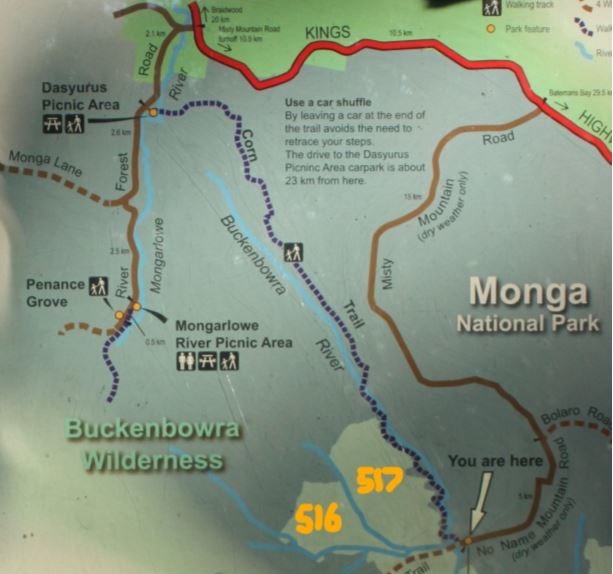
Map showing the compartments 516 and 517 adjacent to the Corn Trail.






